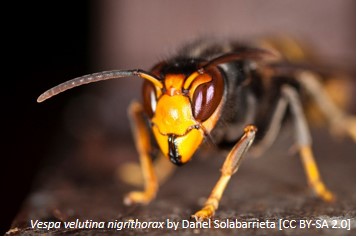Policy Concern Category: Invasive species
Non-native species which are being introduced into Europe, whether by accident or deliberately, can be of policy concern since some of them can reproduce and disperse rapidly in a new territory, establish viable populations and even outcompete native species. As a consequence of their presence, natural and managed ecosystems can be disrupted, crops and livestock affected, and vector-borne diseases or parasites might be introduced, impacting human health and socio-economic activities. Non-native species causing such adverse effects are called Invasive Alien Species (IAS). In order to protect native biodiversity and ecosystems, and to mitigate the potential impact on human health and socio-economic activities, the issue of IAS is tackled in Europe by EU Regulation 1143/2014 of the European Parliament and Council. The IAS Regulation provides for a set of measures to be taken across all member states. The list of Invasive Alien Species of Union Concern is regularly updated. In order to implement the proposed actions, accurate methods for species identification are required when suspicious biological material is encountered. However, morphology-based species identifications are not always possible (e.g. cryptic species, trace material, early life-stages). Therefore, BopCo investigates and evaluates the usefulness of publicly available DNA sequence data to reliably identify each of IAS included in the EU Regulation. The results are presented as factsheets (one per IAS) compiled using publicly available DNA sequence data and information aggregated from various sources. Each factsheet consists of two major parts; (i) a short introduction to the specific IAS compiling information on its taxonomy and current occurrence/distribution in Europe; (ii) an investigation with respect to the usefulness of publicly available DNA sequences to identify this IAS to the taxonomic level stated in the EU list using DNA barcoding. More details on applied methods and a link to the individual factsheets can be found here.
BopCo Coordinators: Nathalie Smitz, Sophie Gombeer, Kenny Meganck, Ann Vanderheyden
Publications & Presentations:
- Meganck, K., Smitz, N., Gombeer, S., Van Bourgonie, YR., Backeljau, T. & De Meyer, M. 'DNA barcoding to identify invasive alien species targeted by EU policies'. 8th International Barcode of Life Conference, 17–20 June 2019. Trondheim, Norway.
- Meganck, K., Smitz, N., Gombeer, S., Van Bourgonie, Y.R., Backeljau, T. & De Meyer, M. ‘Identifying Invasive Alien Species by DNA-barcoding: possibilities, gaps and pitfalls‘. 25th Congress of Zoology, 14-15 December 2018, Antwerp, Belgium. PDF
- Smitz, N., Meganck, K., Gombeer, S., Van Bourgonie, Y.R., De Meyer, M. & Backeljau, T. 'Invasive Alien Species in Belgium (IAS): examining the utility of GenBank and BOLD for species identifications'. 24th Congress of Zoology, 23-24 November 2017, Wageningen, The Netherlands. PDF
- Gombeer, S., Meganck, K., Van Bourgonie, Y.R., Smitz, N., De Meyer, M. & Backeljau, T. ‘Aliens in Europe’. 7th International Barcode Of Life Conference, 20-24 November 2017, Kruger National Park, South Africa. PDF
- Barcoding Facility for Organisms and Tissues of Policy Concern. (2020, January 24). Invasive Alien Species (IAS) factsheets. Zenodo. http://doi.org/10.5281/zenodo.3627027
Pictures:





